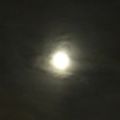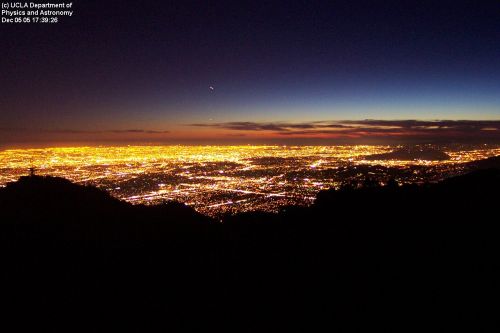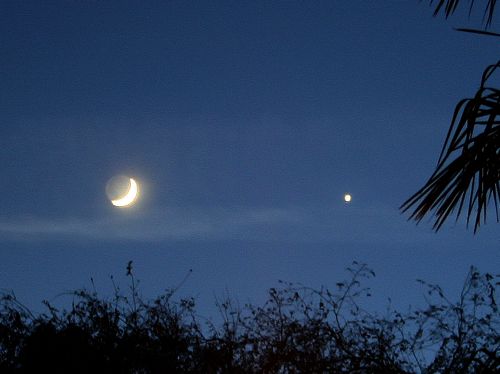Today, the New Horizons spacecraft was launched from the Cape Canaveral Launch Complex. It looked spectacular on NASA’s streaming video!
From NASA:
After launch aboard a Lockheed-Martin Atlas V rocket, the New Horizons spacecraft set out on a journey to the edge of the solar system. Liftoff occurred Jan. 19, 2006 at 2:00:00 p.m. EST from Launch Complex 41 at Cape Canaveral Air Force Station in Florida. New Horizons is headed for a distant rendezvous with the mysterious planet Pluto almost a decade from now.
Space artist Dan Durda was commissioned to do artist’s renditions for the project and thinks that New Horizons could encounter this view of Pluto and Charon while looking back toward the Sun when it arrives in a decade:



 NASA’s Stardust sample return mission returned safely to Earth when the capsule carrying cometary and interstellar particles successfully touched down at 2:10 a.m. Pacific time (3:10 a.m. Mountain time) in the desert salt flats of the U.S. Air Force Utah Test and Training Range.
NASA’s Stardust sample return mission returned safely to Earth when the capsule carrying cometary and interstellar particles successfully touched down at 2:10 a.m. Pacific time (3:10 a.m. Mountain time) in the desert salt flats of the U.S. Air Force Utah Test and Training Range. Over six hundred light years from Earth, in the constellation Aquarius, a sun-like star is dying. Its last few thousand years have produced the Helix Nebula (NGC 7293), a well studied and nearby example of a Planetary Nebula, typical of this final phase of stellar evolution. Emission in this infrared Spitzer Space Telescope image of the Helix comes mostly from the nebula’s molecular hydrogen gas. The gas appears to be clumpy, forming thousands of comet-shaped knots each spanning about twice the size of our solar system. Bluer, more energetic radiation is seen to come from the heads with redder emission from the tails, suggesting that they are more shielded from the central star’s winds and intense ultraviolet radiation. The nebula itself is about 2.5 light-years across. The Sun is expected to go through its own Planetary Nebula phase … in another 5 billion years.
Over six hundred light years from Earth, in the constellation Aquarius, a sun-like star is dying. Its last few thousand years have produced the Helix Nebula (NGC 7293), a well studied and nearby example of a Planetary Nebula, typical of this final phase of stellar evolution. Emission in this infrared Spitzer Space Telescope image of the Helix comes mostly from the nebula’s molecular hydrogen gas. The gas appears to be clumpy, forming thousands of comet-shaped knots each spanning about twice the size of our solar system. Bluer, more energetic radiation is seen to come from the heads with redder emission from the tails, suggesting that they are more shielded from the central star’s winds and intense ultraviolet radiation. The nebula itself is about 2.5 light-years across. The Sun is expected to go through its own Planetary Nebula phase … in another 5 billion years.

 LONG NIGHTS MOON:
LONG NIGHTS MOON: 
